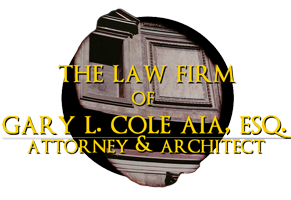A Call for Replacing the Secretary’s Standards with a Model Historic Building Code
By Gary L. Cole AIA, Esq.
“. . . The Standards are neither technical nor prescriptive, but are intended to promote responsible preservation practices that help protect our Nation’s irreplaceable cultural resources. For example, they cannot, in and of themselves, be used to make essential decisions about which features of the historic building should be saved and which can be changed. But once a treatment is selected, the Standards provide philosophical consistency to the work.” Introduction to Standards and Guidelines. National Park Service.
On January 25, 2013, former U.S. Secretary of the Interior Ken Salazar asked the National Park Service (NPS) to conduct an internal review of the Federal Historic Preservation Tax Incentives Program (HTC) to “. . . make sure that we are doing everything we can to work in partnership with local communities, developers and other stakeholders to provide guidance and promote restoration efforts.”
At the time, this was welcome news, though as a former Illinois State Historic Preservation Office (SHPO) staff architect charged with interpreting the Secretary of the Interior’s Standards for Rehabilitation (Standards) for the HTC and other historic rehabilitation tax-incentive programs and now as a private practice attorney, I tempered my expectations. Constructive governmental reform is rarely a swift or revolutionary process.
And, in 2024, more than ten years after former Secretary Salazar’s request to the NPS, little, if anything, has been done to accommodate that mandate.
Many of this country’s historic preservation laws and programs are nearly old enough for their own historic designations and are in dire need of rehabilitation. The historic property-owning public would certainly appreciate a little regulatory streamlining of the HTC program, starting with eliminating application fees for the redundant SHPO and NPS review process.
Meaningful reform also includes reforming how historic properties and communities attract reinvestment capital for business growth, job creation, and local economic stability. This reform should start by relegating the Standards to their stated and intended role of simply providing philosophical consistency for historic rehabilitation efforts. It should not continue to serve as a de facto historic building code enshrined as federal regulations and incorporated directly into federal and state historic preservation laws and programs, nor local historic preservation ordinances, including those of Certified Local Governments.
Hardly changed since their inception in 1977, the Standards comprise a ten-point manifesto of historic preservation’s essential rehabilitation doctrine as enforced by federal, state, and local historic preservation regulatory entities. Though most of the Standards have retained their relevance in varying amounts, some have not. The second part of the unloved Standard No. 9, for example, is the product of an equally unloved 1970s Modernist bias and should be eliminated . . .
Read More
